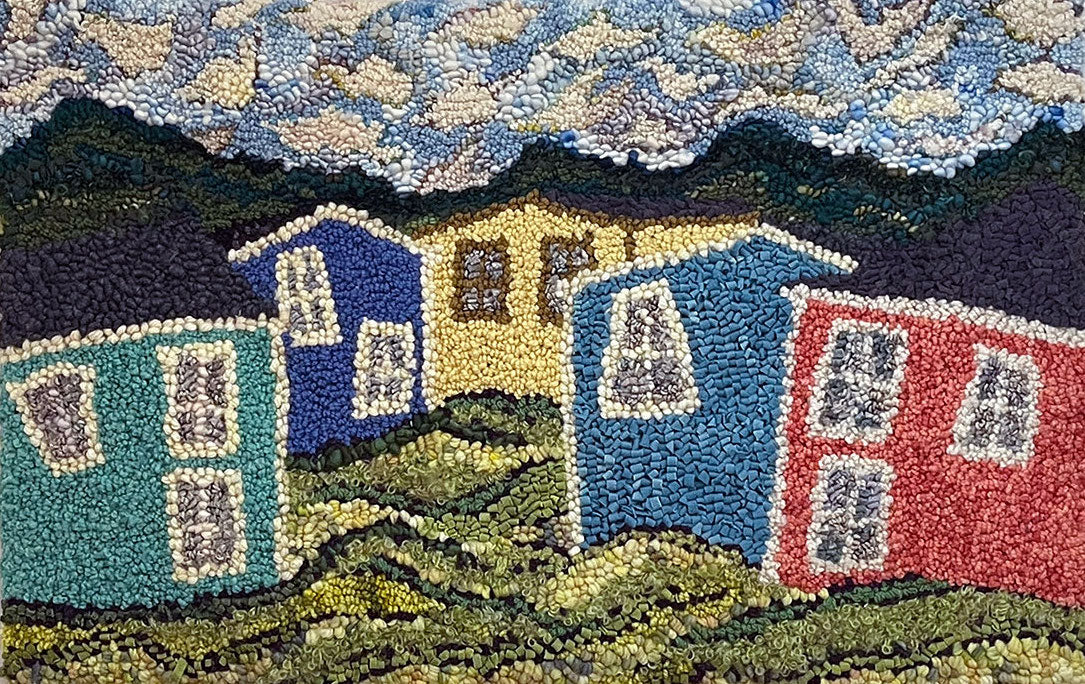
BOATS, THE SEA AND THE TRADITIONAL ARTS OF DEANNE FITZGERALD AND MAUD LEWIS
For my final post I'd like to return full circle to Alastair McLeod's The Boat (see BETWEEN ROCK AND SEA), and to the boat itself, as both a symbol of tradition and a means of sustenance.
As the narrator recalls, it also feels like a family member:
'My mother . . . seemed to be always repairing clothes that were 'torn in the boat', preparing food 'to be eaten in the boat' or looking for 'the boat' through our kitchen window which faced upon the sea. When my father returned about noon, she would ask, 'Well, how did things go in the boat today?' It was the first question I remember asking: 'Well, how did things go in the boat today?' 'Well, how did things go in the boat today?'
The boat serves as the family's anchor; they structure their days around it; they depend on it for food and income.

Image: Deanne Fitzpatrick, Watching Over 1, 2022. From FogForestGallery.ca.
Artists in Atlantic Canada also look to boats - and the ports and coves where they can be found - for inspiration. Like the mother in the story, who 'looks upon the sea with love', Deanne Fitzpatrick, who hooks rugs in her Amherst, Nova Scotia, studio, and the late Maud Lewis, who painted colourful Atlantic scenes on whatever material she could find, both 'see' the sea through their traditional arts.
Fitzpatrick grew up in Newfoundland, where the women of her family hooked rugs to warm the floors of their homes. She took to the craft for the same reason but soon realised she could tell stories through rug hooking, turning recycled wool clothes into yarn. Many of her rugs depict the sturdy, rectangular houses of fishing towns, some with swirling waves and others with doves flying across the sky, perhaps suggesting the hope of peace - in the fishermen's daily return home.

Image: Deanne Fitzpatrick, Peace Over the Village 3, 2022. From FogForestGallery.ca.
Lewis, who died in 1970 and lived most of her life in a brightly painted Nova Scotia salt box with her fish-peddler husband, sold hand-painted watercolour cards to keep poverty at bay. She also painted brightly coloured, childlike images of her Atlantic home, most of which were tiny because the wood for her 'canvasses' was limited. She painted the interior of her house as well, with flowers covering every surface, from the stove to bowls to the stairs.
The images here—rendered in wool and oil - engage with McLeod's words: in them we might hear 'the rubber boots of the men scrunch upon the gravel . . . on their way down to the wharf'; we might think, like the mother, that the sea 'has been so constant'.

1 comment
As a textile enthusiast from Nova Scotia, Canada, I can’t express the extent to which the week of Kate Cavendish blogs have resonated with me. It’s as though I have met a “kindred spirit”. My first novels were Anne of Green Gables, I’ve participated in many rug hooking workshops with Deanne Fitzpatrick, have hiked Fogo Island and traveled “all around the circle” and – finally – Alistair McLeod is truly my favourite author. The connections that Kate has made between east coast literature, geographic place, textiles, design and artists have provided me with an altogether new and delightful enrichment. Thank you for this. (M.McNally, Wolfville, NS, Canada)